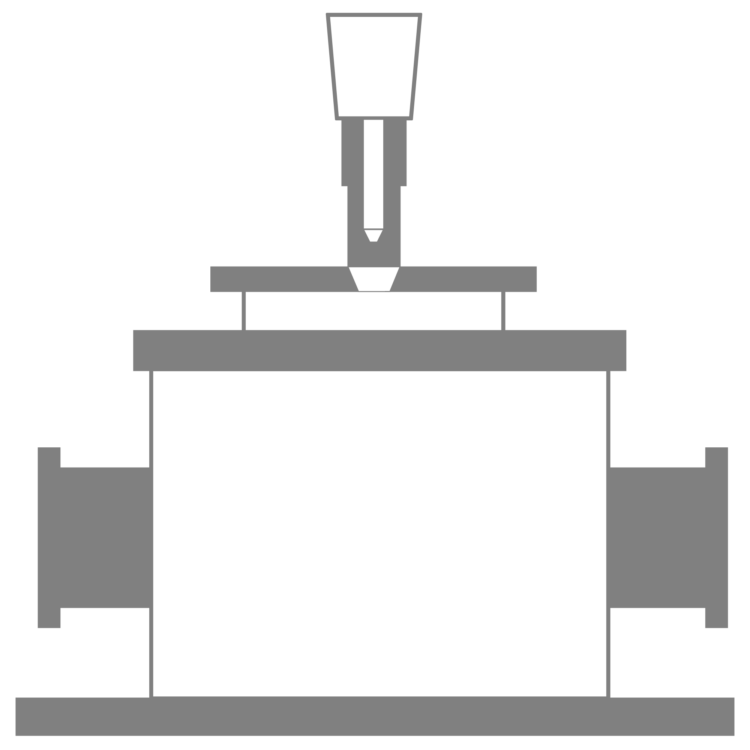Reflection Absorption Spectroscopy has the benefit of greater sensitivity – up to 1 or 2 orders of magnitude compared with transmission. When parallel polarized light is incident to a metal surface, the electric vectors in the incident and reflected light interfere to mutually strengthen and form a vertical standing wave. The interaction of this stationary wave with a thin film on the metal surface, causes an absorption that is stronger than simple transmission measurement.
RAS PRO 85X
85o Incident Angle without Mirror
| Optical System | Refractive optics |  |
| Angle of Incidence | 85° | |
| Polarizer/Analyzer | Wire-grid polarizer (KRS-5) | |
| Polarizing Direction | Fixed at 0° to the plane of incidence |
|
| Sample Placement | Horizontal | |
| Sample Mask | 20 x 10 mm, 10 x 10 mm (Option: 10 x 5 mm) |
|
| IQ Accessory | Available | |
| Smart Purge | Available |
PR-510i
Variable Incident Angle
| Angle of Incidence | 55 - 85° |  |
| Polarizer/Analyzer | Wire-grid polarizer (KRS-5) |
|
| Sample Placement | Vertical | |
| Sample Mask | 30 x 40 mm | |
| IQ Accessory | Available |
RAS PRO410-B
80o Incident Angle
| Angle of Incidence | 80° |  |
| Polarizer | PL-82 is required | |
| Sample Placement | Horizontal | |
| Sample Mask | 20 x 10 mm, 10 x 10 mm | |
| IQ Accessory | Available | |
| Smart Purge | Available |
RAS-300/Hi
75o Incident Angle
| Angle of Incidence | 75° |  |
| Polarizer | Polarizing mirror (parallel polarization only) | |
| Sample Placement | Horizontal | |
| Sample Mask | 20 x 10 mm, 10 x 10 mm | |
| IQ Accessory | Available |


